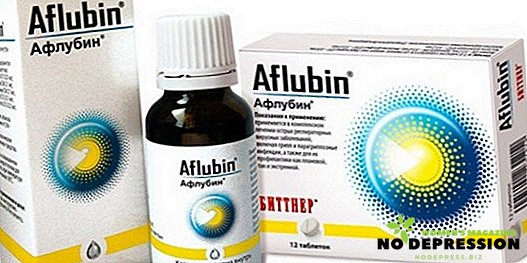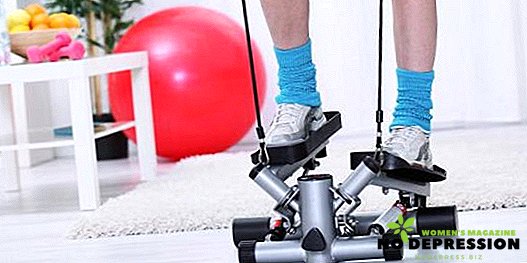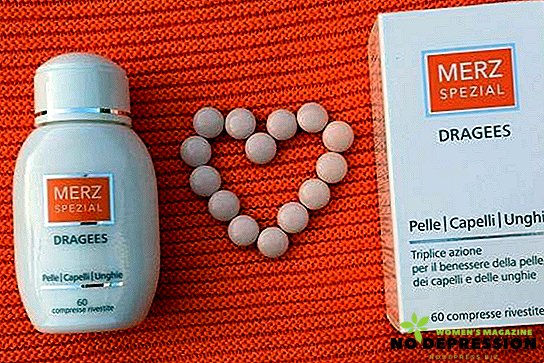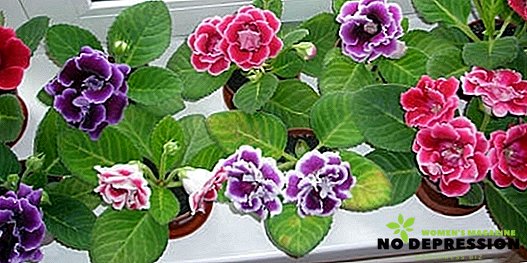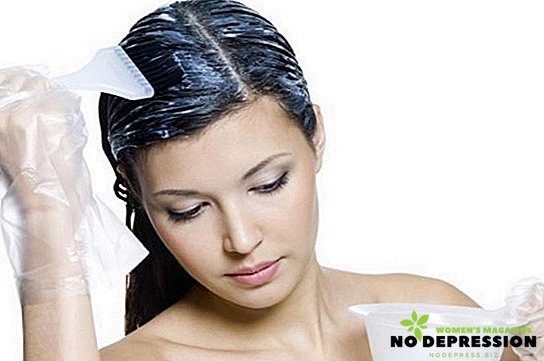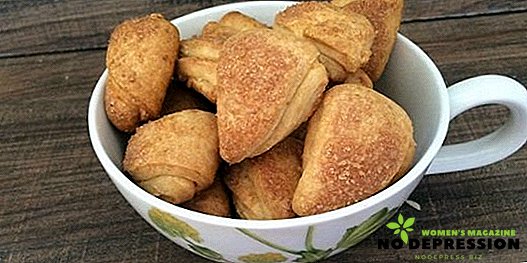Gallstone disease is a problem that many people face, especially in the presence of hepatitis and other gastrointestinal pathologies. Far from immediately prescribed surgery - in the early stages of the patient's condition depends largely on the person's diet. The best option - a diet for gallstone disease and cholecystitis number 5.
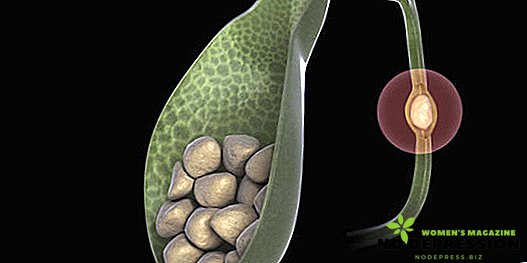
How and why do stones form?
The gallbladder is the “reservoir” for “storing” bile that the liver produces. The movement of bile is ensured by the coordinated work of the liver, gallbladder, ducts, pancreas, intestine. This ensures rapid entry of bile during digestion and its accumulation in the absence of food. In the case of stagnation or changes in the composition of the formation of stones. Another reason - the inflammatory processes occurring in the body.
The following types of stones are divided: cholesterol, pigment, mixed:
- The formation of cholesterol stones contributes to the presence of a large amount of cholesterol in the bile, which as a result precipitates and forms crystals. In the event of a malfunction of the gallbladder, the crystals do not loosen from the body, grow, which leads to the appearance of stones.
- Pigment stones most often appear with hemolytic anemia. due to increased erythrocyte breakdown.
- Mixed version - a combination of all forms. Most often, this problem occurs in the case of an inflammatory process occurring in the gallbladder.
There are many reasons for the formation of such a problem. The most common are:
- excess cholesterol intake;
- bile stasis;
- infectious diseases of the biliary tract;
- hemolytic pathology.
Symptoms and signs: what is worth paying attention to?
This disease is a pathological process that, for many, a long period is almost without symptoms. Especially at the initial stage, when the stones are still small, they do not clog the biliary ducts and do not injure the bladder wall. Patients often do not know about such a problem, being a "latent carrier of stones." And when new growths reach a large size, the first signs begin to appear.

The first symptoms that occur before the appearance of a painful feeling in the hypochondrium include:
- the appearance of heaviness after eating;
- nausea;
- slight yellowing of the skin.
The similar clinical picture appears as a result of disturbance of process of outflow of bile. As a result, there are quite strong deviations in the work of the digestive tract.
Other common features include:
- Pain in the right hypochondrium, which indicates the development of biliary colic. The duration of such attacks can reach from 5 minutes to a couple of hours. The pain itself can be acute, give to the shoulder, back, stomach. If sensations do not pass within 5 hours, this may indicate the development of complications.
- An increase in temperature, which may indicate the development of acute cholecystitis. This pathology, which is often an additional satellite ICD. With intense inflammation of the gallbladder a sharp injection of toxic elements into the blood occurs. With frequent bouts of pain, biliary colic, fever, you can talk about this disease.
- The appearance of jaundice. As we have said, this problem occurs as a result of stagnation of bile in the body. Usually, the eye sclera yellow at first, then the skin. And in people with fair skin, this symptom is more noticeable. Along with the change in skin color may change the color of urine, which becomes darker. This is due to the presence in the urine of a large amount of bilirubin.
- The emergence of nausea, diarrhea, severe attacks of abdominal pain. This is due to the fact that the accumulation of bile is splitting and absorption of lipids. If the stones in the disease are located near the ducts, they block the passage of bile, which is why it cannot circulate normally. However, this symptom is not a specific manifestation of this disease, as it often accompanies the remaining pathologies of the gastrointestinal tract.
The overall symptoms can be very diverse: this is abdominal pain of varying intensity, and digestive problems. Therefore, doctors to accurately establish the diagnosis, be sure to prescribe an ultrasound diagnosis.
Treatment of gallstone disease
The treatment of this pathology is divided into two types:
- conservative;
- surgical
Most often, to start using therapeutic techniques, which include:
- Dissolving stones using special preparations. Commonly used acids: chenodeoxycholic and ursodeoxycholic. However, this method is effective only in the case of the presence of single elements. In the absence of contraindications, treatment can last up to 1.5 years.
- Shock wave lithotripsy. Conservative method, which involves the use of a special shock wave. Her main task is to break up large stones into smaller ones, which are subsequently removed during a bowel movement. Most often, the procedure is prescribed in the case of the presence of stones of a sufficiently large size - from 3 cm or more.
But another very effective technique - a diet, which is the main recovery, relieve pain.
Moreover, the diet should be followed throughout the course of therapy.
Basic principles of nutrition for gallstone disease
Often, gallstone disease develops in people who suffer from diseases such as gastritis, diabetes, obesity, in women and men, for a long time taking hormonal drugs.
And in any of the above cases, it is very important to properly balance the diet, keeping in mind the following principles:
- Complete rejection of cholesterol, which will minimize the formation of stones in the body. If there is no possibility to completely abandon the products with this component in the composition, it is required to minimize their inclusion in the diet.
- Magnesium. Magnesium salts help remove harmful metabolic products from the body faster. It is because patients with this disease are recommended to include in the diet as much as possible products, which include magnesium.
- Alkali. In the diet of patients with gallstone disease, there must be alkaline foods that quite effectively break down small stones, lead to the dilution of bile. To achieve results, it is necessary to drink as much as possible of mineral water.
- The correct mode. It is very important, especially with calculous cholecystitis, to feed fractionally - that is, the volume of servings should not be very large. This can prevent stagnation of bile.
As a prophylactic, it is required to follow diet No. 5, but during the attack itself and for some time after it, the diet must be more strict - it must be chosen by the attending physician. At the same time, the total diet per day should be very high in calories, contain at least 400 g of carbohydrates, 60 g of fat and about 100 g of proteins. You also need to drink at least 2 liters of water per day (it is best to consume such waters as Borjomi and Polyana Kvasova).
Permitted and Prohibited Products
Diet number 5 is quite diverse, especially since all approved foods contain the necessary list of vitamins and minerals for normal body function.
So, allowed:
- Flour products, but only if we talk about yesterday's white or gray bread. It also should not be spices, salt.
- First courses, while soups should be low-fat, for example, in vegetable or chicken broth.
- Porridge on the water, bean side dishes, pasta from durum wheat.
- Meat - must be lean. Ideal chicken, beef, veal, and it must be either cooked or steamed.
- Vegetables, especially seasonal. They can be consumed fresh, baked or stewed. Especially with this disease are useful beets, pumpkin and carrots.
- Fruits that can be included in the diet with virtually no restrictions. But the fastest way to the removal of fruits such as melons and apricots.
- Fat-free dairy products, including sour cream, cottage cheese, yogurt, milk.
- Sweets, to which can be attributed marmalade, marshmallow, marshmallow, jams without sugar.
- Drinks: mineral water, weak tea, compotes.

If you follow the right diet, you can quickly get rid of such unpleasant symptoms as abdominal pain, heaviness after eating, heartburn. Moreover, this diet can be applied not only in the digestive tract, but also in the case of cholecystitis, with excess body weight.
But it is also worth remembering about prohibited foods that can cause complications or exacerbation of the existing disease.
Prohibited Products
In case of violation of the diet pathology may worsen or lead to complications. You can not eat the following foods:
- fresh baking, including pancakes, pies;
- fried meat, smoked products, pies, sausages;
- fatty and rich soups;
- fried vegetables, stews with the addition of a large amount of oil;
- sweets, especially chocolate, ice cream, protein cakes;
- strong tea, coffee, carbonated drinks, especially energy, alcohol.
This adversely affects the excretion of bile.
Menu for gallstone disease
At ZhKB
An approximate diet with a suitable diet for this disease is as follows:
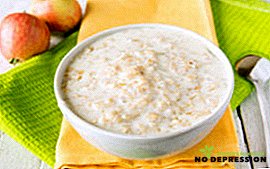 Tomorrow you can make porridge by adding a little olive oil. Additionally - a small amount of cottage cheese, weak tea.
Tomorrow you can make porridge by adding a little olive oil. Additionally - a small amount of cottage cheese, weak tea.- For lunch (afternoon tea): fruit salad.
- For lunch: vegetable soup, steamed vegetables with boiled chicken, rice with steam meatballs - not a choice.
- At lunch you can drink tea with crackers.
- For dinner, boiled fish, mashed potatoes, steamed vegetables or vegetable salad.
- For late dinner - a cup of natural yogurt.
During the period of exacerbation, the diet is stricter - at this time, legumes, mushrooms, sour vegetables, fruits, cheese and cottage cheese are excluded. After one or two days after the attack (with the normalization of the condition), you can expand the menu and return to the treatment table No. 5.
Menu after the operation
Before the operation, food should be gentle, not much different from the principles of diet number 5.
But after surgery, the diet will look like this:
- in the first couple of hours you can not even drink, but if necessary, the patient's lips can be moistened with a damp cloth;
- on the first day you can give a little liquid: water, herbal decoctions;
- the turn of a day and a half can give the patient kefir, compote, low-fat yogurt;
- on the third day, mashed potatoes, vegetable broths, unsweetened juices can be added to the ration;
- five days after the operation, it is allowed to enter porridge on the water, vegetables at the time, baked apples for dessert.
In the future, if the patient feels good, you can gradually expand the range, moving on to the usual diet number 5
Diet - a guarantee of well-being and lack of exacerbations. Along with it, you can take and folk remedies. So, broths of leaves of a birch, a mountain ash, an immortelle, and also the moderate use of vegetable oil promote dissolution of stones.


 Tomorrow you can make porridge by adding a little olive oil. Additionally - a small amount of cottage cheese, weak tea.
Tomorrow you can make porridge by adding a little olive oil. Additionally - a small amount of cottage cheese, weak tea.